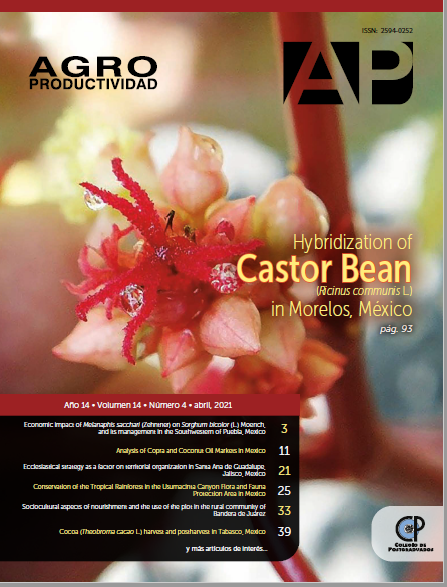Conservation of the Tropical Rainforest in the Usumacinta Canyon Flora and Fauna Protection Area in Mexico
##plugins.themes.bootstrap3.article.main##
Keywords
Biological conservation; Protected areas; High Evergreen Forest; Territorial Ecological Planning.
Resumen
Objective: To study the conservation status of the tropical rainforest in the “Cañón del Usumacinta” Flora and Fauna Protection Area in Mexico, through an analysis of the change in land use and vegetation (1997, 2009 and 2016).
Design/Methodology/Approach: Vegetation and land use shapefiles at 1:250,000 scale (national continuum) corresponding to 1997 (series I), 2009 (series IV), and 2016 (series VI) were downloaded. Finally, a spatial analysis was generated with calculation of exchange rates, using the Land Change Modeler between 1997-2009 and 2009-2016.
Results: During 1997-2009, the tropical rainforest occupied 31.2% and the greatest impact of the period seen was a change rate of 7.4%. Subsequently, between 2009 and 2016 there was a great decrease in the land use change rate in the forest (0.8%), due to its decree as a federal Protected Area in 2008, as well as natural regeneration and the promotion of ecological restoration programs.
Study Limitations/Implications: Absence of geographic variables to analyze factors driving change in land use.
Conclusions: It is essential to promote the sustainable management of the Usumacinta Canyon based on what is established in the land use planning program and the management plan, and to redouble efforts to implement actions for restoring ecosystem services and the continuous monitoring of change in land use.

